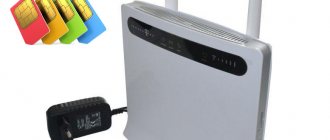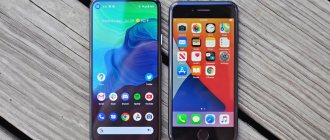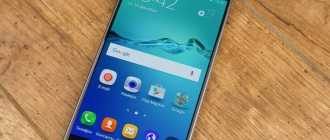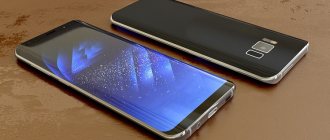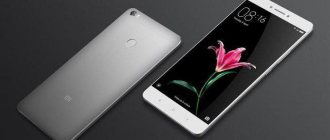The modern market offers a huge amount of equipment in a very different range of technical capabilities and prices. Xiaomi and Samsung invariably appear among the most popular brands, not only in the domestic but also in the global market. And very often people planning to buy a phone wonder what to choose: Xiaomi or Samsung? Of course, each manufacturer has advantages, and each specific model needs to be compared. But there are also general trends and characteristic advantages of each company, which we will discuss in this article.
Comparison of Samsung and Xiaomi manufacturers: which is better
First, let’s talk about the smartphone manufacturers themselves and consider the main features and “tricks” of each company.
Brand
Samsung is a South Korean company that has been in business since 1938 and has earned a good reputation for hard work and high quality standards. During its activity, the manufacturer had to endure many financial difficulties and crises, which only made it stronger and taught it to fight competitors.
For comparison, Xiaomi is a young Chinese company, operating only since 2010. Successful management and competent leadership led to the rapid growth of the manufacturer and the creation of real competition for other giants. Today, when comparing Xiaomi or Samsung, preference is often given to the first option, due to its lower price with almost identical characteristics.
Technical part
When comparing which is better, it is important to take into account the technical content of the phones. Here, each device has an individual approach. The main difference is that Samsung implements its own developments into smartphones, while Xiaomi buys ready-made patents. In particular, Samsung gives preference to Exynos processors. While Xiaomi installs Qualcomm. According to experts, the second option is even better and has superior performance.
As for the graphics accelerator, Samsung prefers the Mali line, while Xiaomi chose a more advanced option with Adreno. Otherwise, the situation is almost identical - in terms of RAM, built-in memory and other hardware indicators.
Screen
When comparing which is better - Samsung or Xiaomi, you cannot ignore the features of the displays. Here Xiaomi loses a little, because its devices have far from the best screens with an IPS matrix. For most models, Full HD expansion has been delayed, which is already considered a “last century”. The advantages include anti-glare qualities, excellent brightness and contrast. This is where the benefits end.
As for Samsung phones, they have a better display. Super Amoled is provided here, which is recognized by many experts. The advantages of such screens include adaptive brightness, small thickness, reduced energy consumption and better contrast. Some Samsung models boast screens with a resolution of 2960*1440. To be fair, it is worth noting that Xiaomi also uses Amoled displays in its flagships, so this advantage is gradually leveled out.
Battery
When choosing between the two options Xiaomi or Samsung, it is important to consider the autonomy of the devices. Xiaomi attaches key importance to this point, which is why in many models the battery capacity exceeds 4000 mAh. In some devices this figure is even higher than 5000 mAh, which is currently a very respectable indicator.
Samsung's batteries are no better. On the contrary, here the main line has batteries with a relatively small capacity of about 3000 mAh. And only in new models did this mark begin to approach 4000 mAh. But these are just numbers, because in terms of autonomy, phones from the Korean brand are almost no worse, thanks to a less energy-consuming display. We have already mentioned this above
Appearance
When considering the question of which phone is better - Xiaomi or Samsung, you cannot ignore the design. Let us immediately note that in this matter each person is guided by internal criteria, and there are no uniform rules. But let’s try to make a small comparison, which is better:
- Many criticize Xiaomi, calling their models a copy of Apple products. Indeed, the Chinese company did not reinvent the wheel and took some design elements from the well-known American structure. But this is only the appearance, because everything else is done in their factories. In addition, modern materials are used in the manufacture of cases, and buyers have a large selection of colors and models at their disposal. So the comments that Xiaomi is a fake are, at a minimum, incorrect.
- In the case of Samsung, there are fewer complaints about the appearance, and many believe that the product of the South Korean company is noticeably better in this regard. Even budget models can easily be confused with flagships, which is good news. It was Samsung that was one of the first to introduce a frameless screen, which looks very beautiful.
When choosing between two options - Samsung or Xiaomi, buyers often look at the appearance of the device. And here everyone chooses an option to their liking.
Camera
Old Xiaomi models did not please customers with high quality photos. Users complained about high blurriness and noise in images. Today the situation has become better, because the manufacturer is installing modules created jointly with Lecia. Experts claim that such cameras exceed the quality of a number of other analogues. Modern Xiaomi models already have HDR, improved color reproduction, high-quality portrait photography and a number of other advantages.
In the case of Samsung, there are no complaints about this aspect at all. Here, even budget smartphones have high-quality cameras. If we compare which is better, Samsung phones are still one step ahead in terms of camera quality. But this distance is gradually decreasing.
operating system
When considering whether to choose Xiaomi or Samsung, many users look at the capabilities of the OS. Some people think that it is better to choose Xiaomi, which has a convenient add-on to Android - MIUI. A number of experts are confident that this is the best OS on the market. Samsung has regular Android installed with a minimal set of programs. The manufacturer invites the buyer to choose the applications himself. If you compare which is better, there are thousands of opinions here. Some people like MIUI, while others complain about its confusion and instability.
Price
When choosing between Xiaomi and Samsung, the buyer often looks at the price. For many buyers, the better smartphone is one that is cheaper but not inferior in performance. In this situation, the leading position is held by Xiaomi, which is more accessible to users. Even the flagships of the Chinese manufacturer are 2-2.5 times less expensive than Samsung. But it is worth noting that this trend is changing. There is an opinion that in the near future the pricing policy in relation to these devices will level out.
Conclusions: Xiaomi vs Samsung
Samsung and Xiaomi have a large range of smartphones. The phones do not differ much in terms of parameters, for example, one is good when it comes to the camera, and the other is good when it comes to RAM and built-in memory. The phones are well assembled, with good technical parameters.
Some users prefer Samsung, while others are Xiaomi fans. However, there is no clear answer as to which company makes better phones.
To choose a smartphone, you need to check the parameters of a specific model and compare them with your needs. Not everyone uses their phone for the same things; individual users' interests sometimes differ radically. What turns out to be a plus for one can be a big disadvantage for another.
Xiaomi: smartphone models and how to understand the lines
Comparison of popular models A50 and Redmi Note 8 Pro
To ensure the accuracy of the review, we will consider the two best-selling models from Xiaomi and Samsung - Redmi Note 8 Pro and A50, respectively. To decide which smartphone to choose (Xiaomi or Samsung), let’s go over the main parameters:
- Display. The Redmi Note 8 Pro has an IPS screen with a contrast ratio of 1317 to 1, as well as white and black brightness of 640 and 0.486, respectively. In the A50, the last parameters are 551 and 0, and the contrast is completely equal to infinity. Samsung's color accuracy is also better. As for the display size, it’s 6.53 for Xiaomi, versus 6.4 for Samsung. Moreover, the resolution of both screens is the same - 2340*1080. The quality of the Samsung screen is better, but Xiaomi's display has better brightness and is capable of reproducing HDR content.
- Autonomy. The Redmi Note 8 Pro phone has a 4500 mAh power supply, which provides 33.5 hours of talking time and 15 hours of Internet surfing. Charging speed up to 39% in half an hour. These figures are better than those of the A50, which has a 4000 mAh battery. Its talk time is limited to 24 hours and 12 hours of Internet browsing. As for charging, the 32% mark is reached in 30 minutes.
- Iron. The phones have MediaTek and Exynos CPUs for Xiaomi and Samsung, respectively. The first is made using 12nm technology and has high performance at the level of 8-core Kryo processors. As for Samsung, there is a 10nm CPU created by the company itself. The test result for overall performance showed the advantage of Redmi Note 8 Pro - 224759 versus 144574. The difference is quite impressive.
- Memory. The situation is better on the Xiaomi phone, because it has 6 GB of RAM, as well as built-in memory of 64 or 128 GB. Additionally, you can install a flash drive. In the case of Samsung, there is less RAM on board (4 GB), and the disk is also 64 or 128 GB expandable.
- Camera. Xiaomi has a 64 MP Samsung ISOCELL Bright GW1 module, f/1.9, as well as additional cameras - an 8 MB wide-angle, a 2 MB macro and a 2 MP depth sensor. Samsung has a 25 MP Sony IMX 576 camera, as well as a wide-angle module and an 8 and 5 MP depth sensor. In daylight, the Samsung produces the best colors, but when light levels drop, noise appears and details are lost. In this regard, Xiaomi has a better result.
If we compare what to choose from the reviewed models, the A5 wins in terms of price, better screen, dedicated SD card slot, and fingerprint scanner. As for the Redmi Note 8 Pro, it has a cooler design, HDR support on the screen, and a larger battery capacity. Xiaomi also has a better processor and camera if you need to shoot in poor conditions.
Xiaomi Mi 9T vs Samsung Galaxy A80
Qualcomm's Snapdragon 730 combines power and battery efficiency, integrates artificial intelligence capabilities, and delivers faster gaming performance. Since its release earlier this year, there have only been a few phones on the market that have received this processor. Xiaomi Mi 9T and Samsung Galaxy A80 run on this chipset.
Both have unique features that really set them apart from each other.
Technical characteristics of Xiaomi Mi 9T:
- display: color AMOLED 6.39 inches;
- memory capacity: 6/64GB;
- processor: Snapdragon 730;
- video processor: Adreno 618;
- main: 48 MP, 8 MP, 13 MP;
- front camera: 20 MP;
- battery: 4000 mAh.
- average price 19,790 rub.
Specifications of Samsung Galaxy A80:
- display: color AMOLED 6.7 inches;
- memory capacity: 8/128 GB;
- processor: Snapdragon 730;
- video processor: Adreno 618;
- main: 48 MP, 8 MP;
- front camera: 32 MP;
- battery: 3700 mAh.
- average price 36,464 rub.
Both phones have the same processor but different parameters. If you need a smartphone with a large amount of memory and an interesting design, then you need to choose the Galaxy A80.
For those looking for a cheaper phone, the Xiaomi Mi 9T is a great option. The smartphone is productive and affordable.
Let's sum it up
When looking at reviews about whether Xiaomi or Samsung is better, you may come across a polarity of opinions. Many users do not perceive the Chinese manufacturer at all and prefer proven brands. But for many buyers, the issue of price comes first, and that’s when Xiaomi phones come first. In order not to make a mistake in your choice, it is important to consider what exactly interests you in a phone:
- If performance and speed come first, it is better to give preference to Xiaomi.
- For lovers of products from trusted brands, Samsung will be more suitable, because the name of this manufacturer is on everyone’s lips, and its experience speaks for itself.
- Samsung is still better in terms of camera and display, but here the situation is gradually leveling out and Xiaomi phones are catching up with their competitors in these indicators.
- Xiaomi has a better pricing policy. But again, here you need to look at the lineup. If we talk about mid-range phones, the prices are almost the same, but in the case of flagships the difference can be very large.
When choosing, decide what exactly you need - camera, speed, autonomy or other parameters. Given your priorities, you need to make a choice. There are no phones that are perfect in every way. If you get one, it will be very expensive and not always affordable.
Xiaomi income
Chinese smartphone maker Xiaomi reported revenue of 174.9 billion yuan (+52.6%) and net profit of 8.6 billion yuan (+59.5%) in 2021.
Xiaomi reported revenue of RMB 113.8 billion (+41.3%) from smartphone business, RMB 43.8 billion (+86.9%) from IoT products and RMB 16 billion (+61.2%) ) from the Internet services segment. Xiaomi's revenue in international markets grew 118.1% to 70 billion yuan, accounting for 40% of total revenue in 2021.
Xiaomi CFO Shou Zi Chu said sales outside China accounted for 40% of the company's revenue in the fourth quarter of 2021.
The latest IDC report states that Xiaomi sold 52 million smartphones in China with a market share of 13.1% in 2021. For comparison, Huawei – 105 million with a share of 26.4%.
Xiaomi maintained its growth momentum in the first half of 2021, driven by large shipments of the Redmi and Mi 8 series.
Which smartphones are cheaper
In terms of price, Xiaomi devices are more attractive, and for many this is the key criterion for choosing a smartphone. Chinese flagships are sold at prices that are comparable to mid-range Samsung, although the situation has been gradually changing recently.
The demand for Xiaomi smartphones is actively growing, so the manufacturer allows itself to increase their prices. It is expected that in a few years the prices of smartphones from both brands will be almost the same. Everything will depend on the popularity of their gadgets in the market.
Cameras
For many, indicators such as the quality of photos and videos are key when choosing a new smartphone. Let's look at the strengths and weaknesses of cameras from both brands.
Samsung
In the mid-range and budget price segments, the South Korean manufacturer manages to equip its devices with good cameras. In general, this is even, in a sense, one of the features of the A-series devices. However, the “M” line does not feel very comfortable in this regard, since it has other features.
Good detail in images, good night photography, a large number of modes - all this is relevant for almost any Samsung smartphone worth 14-15 thousand rubles or more. The only obvious weak point of these cameras is wide-angle shooting. When the standard viewing angle is expanded, the clarity of the picture is greatly lost, and slight distortions appear at the edges of the images.
However, in general, most representatives of the A-series can boast, if not excellent cameras, then a good level of shooting, as for devices in their price category.
Redmi
What can you say about the Redmi line? Often these smartphones can only boast of broad functionality. Their cameras often have features that comparable devices from Samsung do not have (120/240 fps slow motion, digital stabilization, etc.).
But if you are interested in the quality of pictures in general, then it is better to take a closer look at the Koreans. In the mid-budget price range, the Chinese are still behind Samsung, although they set the bar at the flagship level.
Comparison table:
| Samsung | Redmi | |
| Photo/video quality | + | — |
| Total: | 3 | 4 |
Design
It is difficult to compare the Haomi and Samsung models in terms of design, since all phones from the brands look attractive, and the design style is a matter of taste. But it is still possible to highlight strengths and weaknesses.
Xiaomi users and experts are often criticized and called cheap copies of Apple models. Indeed, there are similar features and trends, but Xiaomi is not a fake, but budget smartphones created in the spirit of the times. Most of the models look exclusive - other brands don’t have them. Device cases are made of metal, ceramics, glass. Each model is available in several colors. The phones look, if not luxurious, then stylish and well built.
In principle, Samsung is not criticized - sometimes in reviews it slips that the phones are made in the space style of the future, there are no other complaints. Space design is rather a plus and feature of the brand. Budget and mid-range lines look expensive - like the premium class of many other top brands.
Display
Xiaomi's screen is not the strongest place. IPS matrices are high-quality, modern, but without particularly outstanding characteristics. What you can count on is FullHD resolution, an impressive diagonal, high pixel density per inch and other standard options. Brightness, contrast and anti-glare properties are also okay, but that’s where the available options end.
Samsung pleases customers with a SuperAMOLED screen - the technology is rightfully considered the best of all. The advantages of this display:
- adaptive brightness;
- maximum contrast;
- good black reproduction;
- minimum thickness;
- low energy consumption values.
But here you need to look - some Samsung models have a QHD+ display. Its resolution is excellent, which guarantees maximum comfort when viewing content (photos, videos). The Xiaomi company gradually began to introduce displays with active matrix types on organic LEDs on its smartphones. For now, the maximum capabilities are available in the most modern models.
Battery
Here Xiaomi is clearly the leader - all models come with batteries from 4000 mAh to 5300 mAh. Without recharging, the “Chinese” will easily last three days if used moderately, and less if used actively. For Samsung, everything is sadder - it puts batteries at best 3000 mAh, or even 2600 mAh. The battery lasts for a day – that’s good, but for most users this is not enough.
Autonomy
Battery life is something that Xiaomi smartphones were also famous for. But recently, Samsung has done a good job so that its devices do not lag behind the leaders in this criterion and also hold a charge well. And yet, it’s impossible to immediately name a favorite here, so let’s turn to the “Rating of battery life of smartphones 2021” from nanoreview.
It is noteworthy that the 2nd place with a small margin was taken by the Galaxy M51, the 4th by the Galaxy A42, and then there is a big gap and the next Samsung smartphone is only in 23rd place (Galaxy M30s). For Redmi, the situation is similar, but still a little worse, and the first 3 devices occupy the following positions: 9th, 21st and 25th places.
And this does not take into account the new Galaxy M52 and M62, which also boast a capacious battery and an energy-efficient processor, which has a positive effect on battery life. And although Redmi smartphones hold a charge well on average, we must give Samsung credit. A point for the Koreans.
Comparison table:
| Samsung | Redmi | |
| Who holds the charge longer? | + | — |
| Total: | 4 | 5 |
